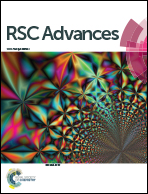Highly effective in-depth dewatering of excess sludge using methanol
Abstract
In-depth dewatering of excess sludge facilitates cost reduction of wastewater treatment plants, and makes final disposal of sludge more economically feasible. In this study, contact with methanol was selected as an improved method to achieve in-depth sludge dewatering. After 30 min methanol contact and subsequent natural drying at ambient temperature for 6 h, the water content of the sludge was reduced to 13.4%. The thermogravimetric analysis showed that the organic substance content (per unit weight) of the dewatered sludge was 3-fold higher than untreated sludge. The results suggested that methanol-aided dewatering did not influence the availability of sludge for subsequent utilization or energy recovery. The microorganisms that were retained in dewatered sludge were found to be Gram-negative bacteria, whose adaptive phospholipid composition possibly improved their tolerance to methanol. Hence, the methanol-aided dewatering mechanism can be concluded as (1) disruption of EPS structure and damage of cell membrane and (2) release and re-distribution of interstitial water. Furthermore, the optimal dewatering efficiency and operation parameters were predicted using response surface methodology, which could act as reference values for engineering application.


 Please wait while we load your content...
Please wait while we load your content...